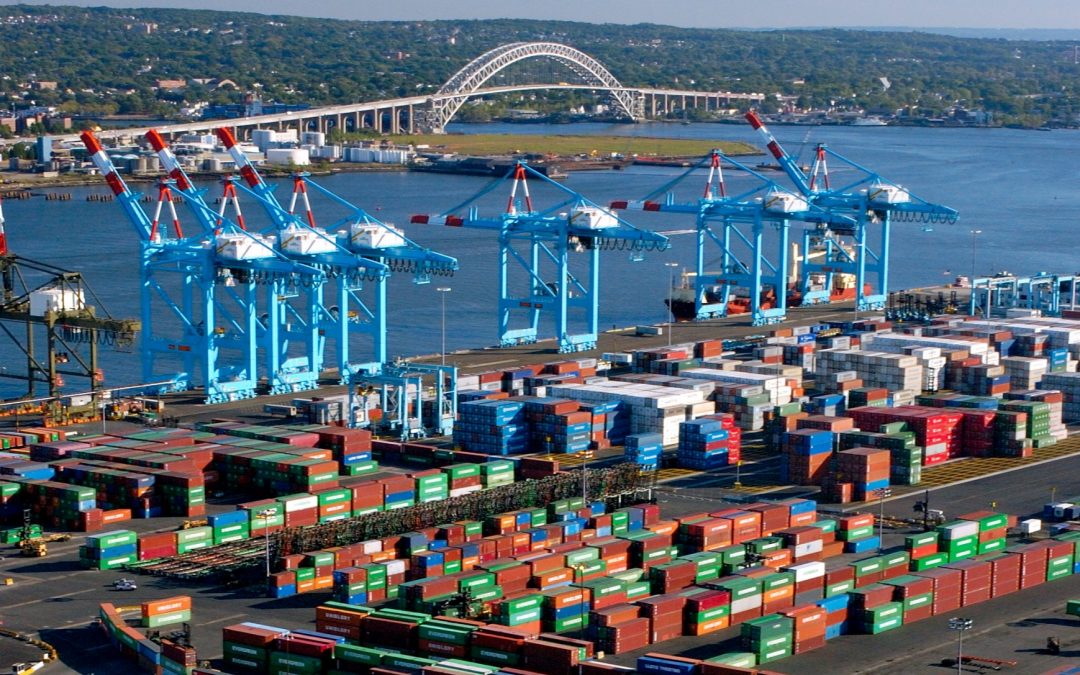Working in the midst of a massive port expansion project APM Terminals Gothenburg has remained nimble in keeping late-arriving vessels on track for their proforma windows, helping 96% of the 70% of vessels who arrive out of their appointed timeslots to depart on time. On top of this, the terminal has been creative in implementing safer and faster routing for terminal handling equipment – shortening driving distances by a remarkable 30% for exports and 15% overall.
This success at APM Terminals Gothenburg shows that collaboration and trust brings mutual gains for both APM Terminals and its customers. The terminal, located in the largest container port in Scandinavia, re-introduced bi-directional, two-way traffic for Straddle Carriers in September, rather than the more mainstream one-way system.
Top-tier service
The person behind this solution, Supervisor Rickard Lindén, said: “We previously had bi-directional streets by the quay, and now we wanted to reintroduce this option but with an even better solution, all while preserving yard space and maintaining the highest safety standards. Our straddle carrier operators are committed to delivering top-tier service, and the ability to optimize their work with shorter driving distances plays a key role in ensuring consistently high service levels.”
What is all the more impressive is that the switch to bi-directional pathways was implemented while 60% of the southern quay was out of service due to the Skandia Gateway project. The joint project by the Swedish Maritime Administration and the Port of Gothenburg deepens the port’s berth from 13.5 metres to up to 17.5 metres, while the turning circle outside the Container Terminal is being widened.
Clever solutions
The upgrade, as welcome as it is, nonetheless requires clever solutions to enable the terminal to not only carry out business as usual, but to continue to improve. According to Jasmin Mujdzic, APM Terminals Gothenburg Head of Operations, “the key to maintaining continuous improvement during port expansion is meticulous and proactive planning with all relevant stakeholders, flexible berth planning in close collaboration with the shipping lines.
“Dynamic staffing is also crucial – adjusting manpower levels to match operational needs, whether that means adding resources or reallocating them,” he says. “We constantly assess the availability of equipment, including horizontal transport and cranes, and adjust planned maintenance schedules if necessary.
“We carefully analyzed vessel sizes, drafts, available berths, and container volumes to develop a tailored solution. This involved conducting a gap analysis to pinpoint necessary adjustments. We then engaged with our customers to discuss minor adjustments to proforma windows where possible. Through strong collaboration, we successfully navigated these challenges and established a sustainable solution.”
Solutions at source
In addition to solving issues before they arise, Mujdzic is delighted with the achievement reached with the implementation of bi-directional maneuvering – a change which means that driving distances are shorter – leading to less fuel use, less waiting by customers and safer operations.
Mujdzic also takes pride in the fact that this was a solution which came not from management, but from frontline staff. “Bi-lateral put forward and agreed on by our teams – the dockworkers and supervisors who are the real experts.” Mujdzic credits the APM Terminals-wide adoption of Lean business performance principles, and a culture of speaking up to share ideas – which leads to the fast implementation of solutions. “Great ideas can come from everywhere,” says Mujdzic “management and leaders do not have a monopoly on ideas, and this was yet another case in point which demonstrates that.”
On balance
The bi-directional street now in use on the quay behind APM Terminals Ship to Shore cranes was also facilitated by new local standards which enable 95% of hatch covers to be placed in the vessel instead of behind the cranes. Hatch covers play an important role in ensuring cargo is protected from water while at sea. According to Mujdzic, managing to place hatch covers on the ship itself was achieved by ensuring there are two or more holds on the operating bay when loading.
Weighing up
“We weighed all the implications and solutions, and on balance, taking into consideration safety, efficiency, time to implement and cost, this was the best solution for our terminal. After conducting a thorough safety evaluation, we found no increased risks associated with bi-directional streets. We already use other bi-directional streets elsewhere in the termnal without any incidents to date. Our operational area is designed to safely handle this solution and we follow strict safety protocols and traffic regulations,“ he says
This proactive and responsive approach helps APM Terminals Gothenburg to ensure not only that vessels depart within their proforma windows, but that safety remains paramount, and that adaptability and planning go hand in hand.
Source: APM Terminals





